Amsterdam
Impressive trade capital of the world
Detail
Date of first edition: ca. 1725
Date of this edition: ca. 1725 (Homann Heirs)
Dimensions (not including margins): 57,5 x 48,5 cm
Dimensions (including margins): 59,5 x 52,5 cm
Condition: Excellent. Sharp copper engraving printed on strong paper. Partly original coloured. Centre fold as published. Sufficient margins.
Condition rating: A+
Verso: blank
In stock
Amsterdam
This stunning plan of Amsterdam, published circa 1725, celebrates the capital of the Netherlands at the peak of its economic and military power. Hand coloring highlights the semi-circular shape of the city, which pivots around the trade center of the Amstel River. Over 300 prominent locations are labeled throughout the map in accordance with keys in the upper corners. Gardens and windmills are also drawn. Below the plan, multitudes of ships are rendered with fine detail in the harbor, illustrating the city’s bustling trade. Left are the VOC warf and harbour. This effect is furthered by the panoramic view at the bottom of the map, which looks onto the city’s waterfront from the sea.
The view is set off with a frame that is adorned on the sides with the city’s coats of arms. It is also topped with a cartouche featuring the city’s arms sitting on a throne, surrounded by cherubs and books. Books on the left list the trading partners of the Dutch East India company, and books on the right name the Dutch colonies, including New Amsterdam, Curacao and Brasilia, below the logo of the Dutch West India Company. The cartouche continues to the sides of the map with scenes of commerce, featuring people from around the New World bringing their goods. Of particular interest is a tobacco rope made from twisted tobacco leaves, which points to the growing prominence of the tobacco trade.
This map was printed from the Homann’s original by his heirs. As was customary for Homann’s maps and other Dutch maps of the mid-1800s, the plan has been colored and the cartouche and view left uncolored. It is in good condition with very minor chips to the corners and some overall discoloration. Stain near the river in the upper right. Johann Baptist Homann (1664-1724) was a renowned German mapmaker of the late 17th and early 18th century who served as geographer to the Holy Roman Emperor. His business was carried on through the 18th century by the Homann Heirs, also prolific and popular mapmakers. Their continued success with maps such as this one proves the enduring value of Homann’s work.
Original title Accurater Grundris und Prospect der Weltberuhmten Hollandischen Haupt und Handels-Stadt Amsterdam
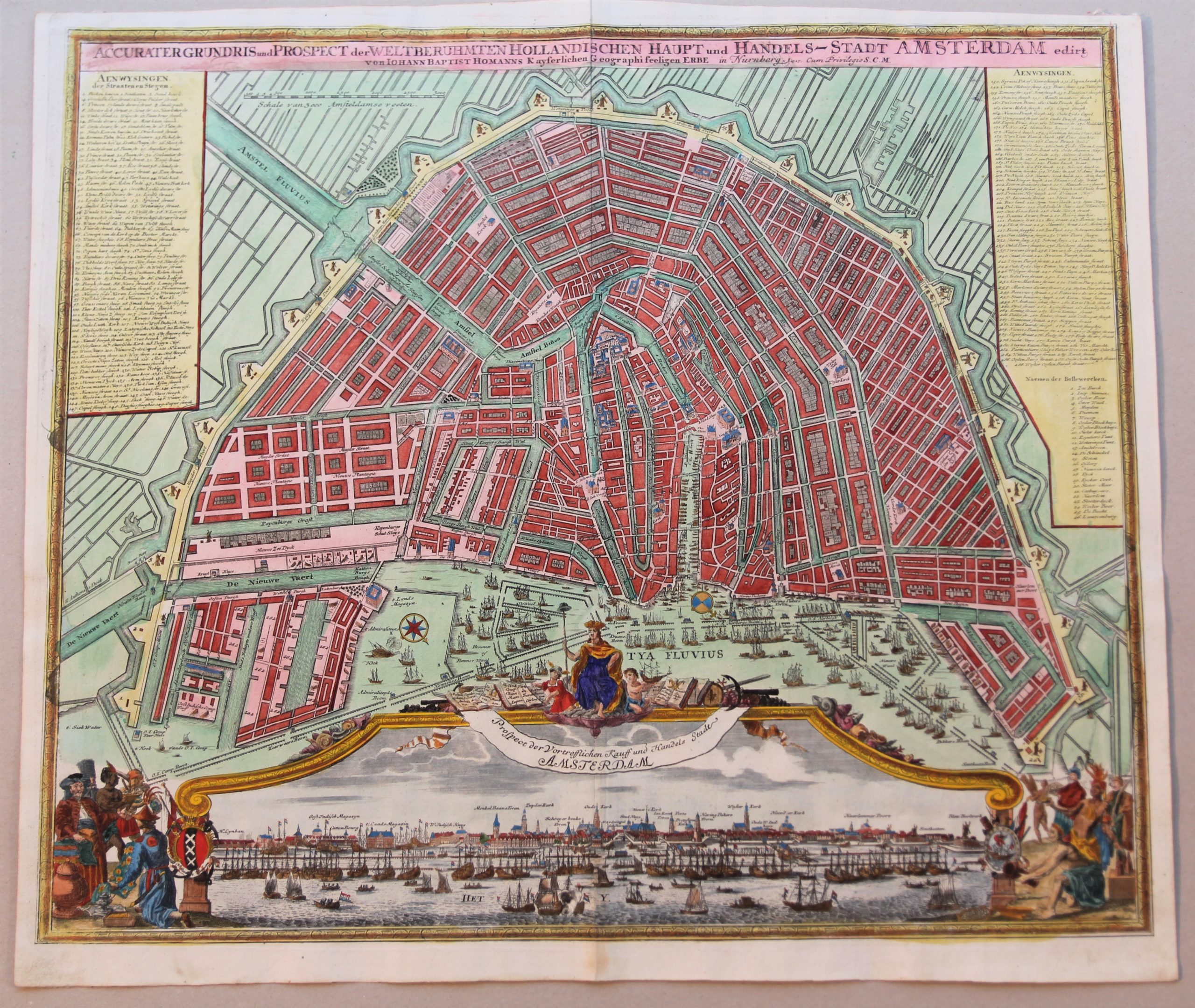


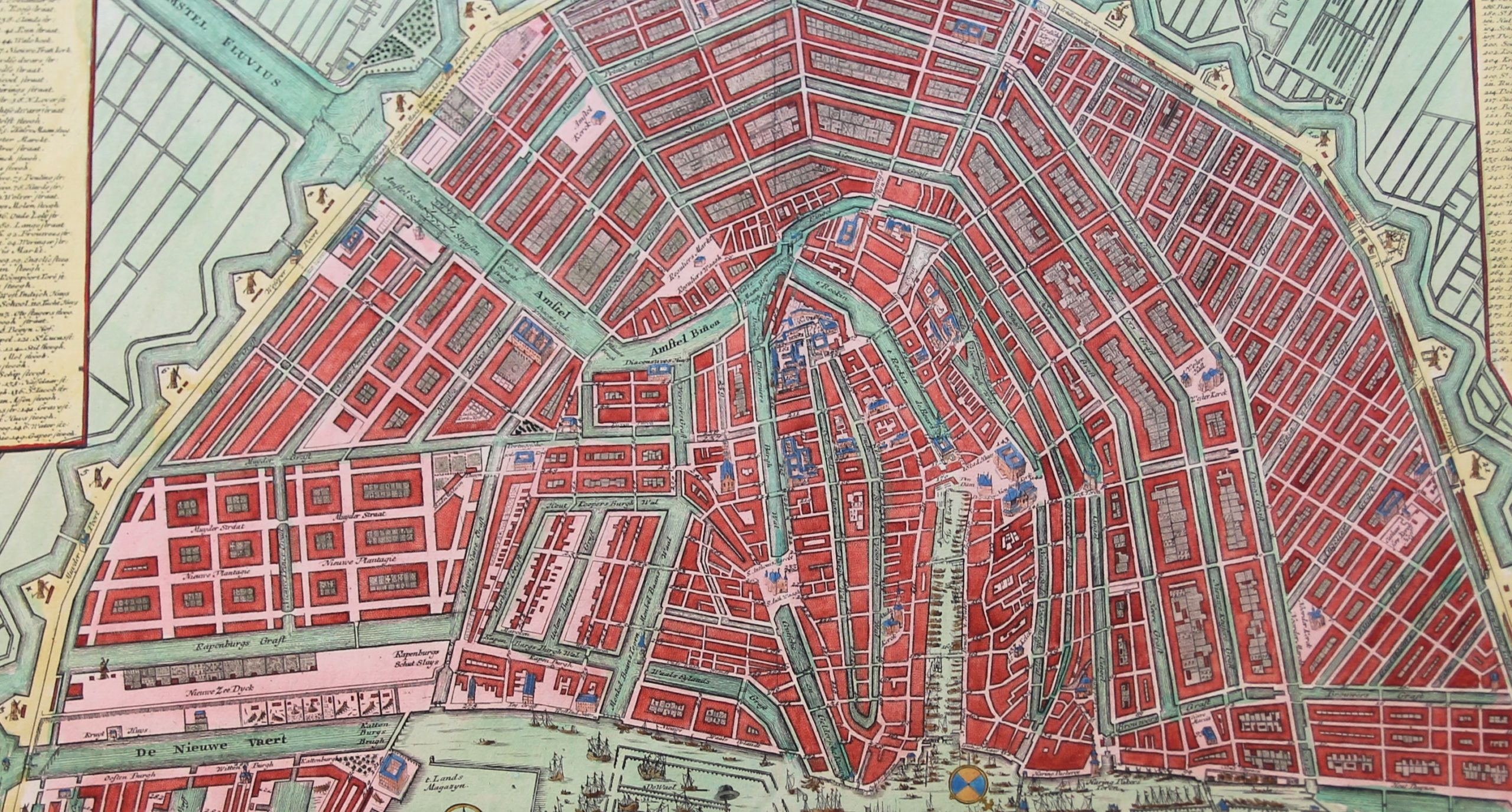
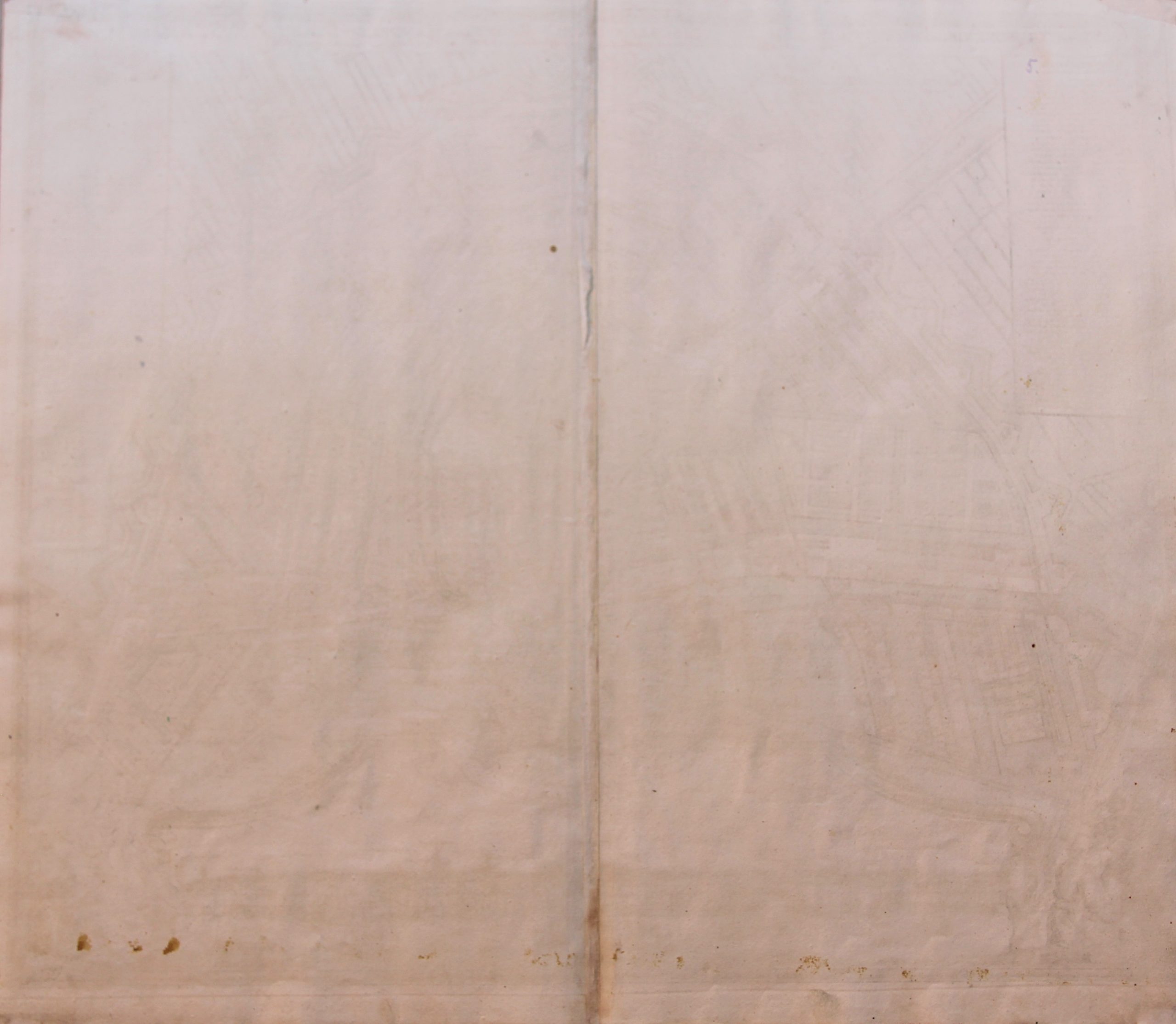
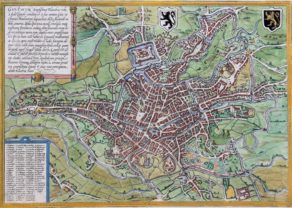
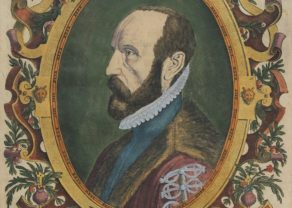
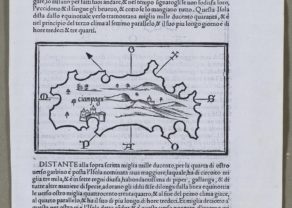
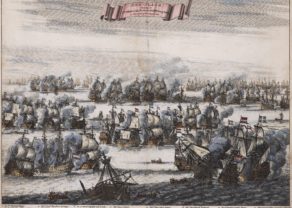
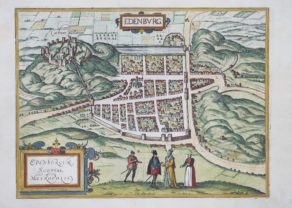
Homann
Johann Baptist Homann (1663-1724) was a mapmaker who founded the famous Homann Heirs publishing company. He lived his entire life in Bavaria, particularly in Nuremberg. Initially, Johann trained to become a priest before converting to Protestantism and working as a notary.
In 1702, Johann founded a publishing house that specialized in engravings. The firm flourished, becoming the leading map publisher in Germany and an important entity in the European map market. In 1715, Johann was named Imperial Geographer to the Holy Roman Empire by Charles VI and made a member of the Prussian Academy of Sciences. Most importantly for his business, his reputation and contacts gained him imperial printing privileges which protected his publications and recommended him to customers. Johann is best known for this Grosser Atlas ueber die ganze Welt, or the Grand Atlas of the World, published in 1716.
After Johann died in 1724, the business passed to his son, Christoph (1703-1730). Upon Christoph’s early death, the company passed to subsequent heirs, with the name of the company changing to Homann Erben, or Homann Heirs. The firm continued in business until 1848.